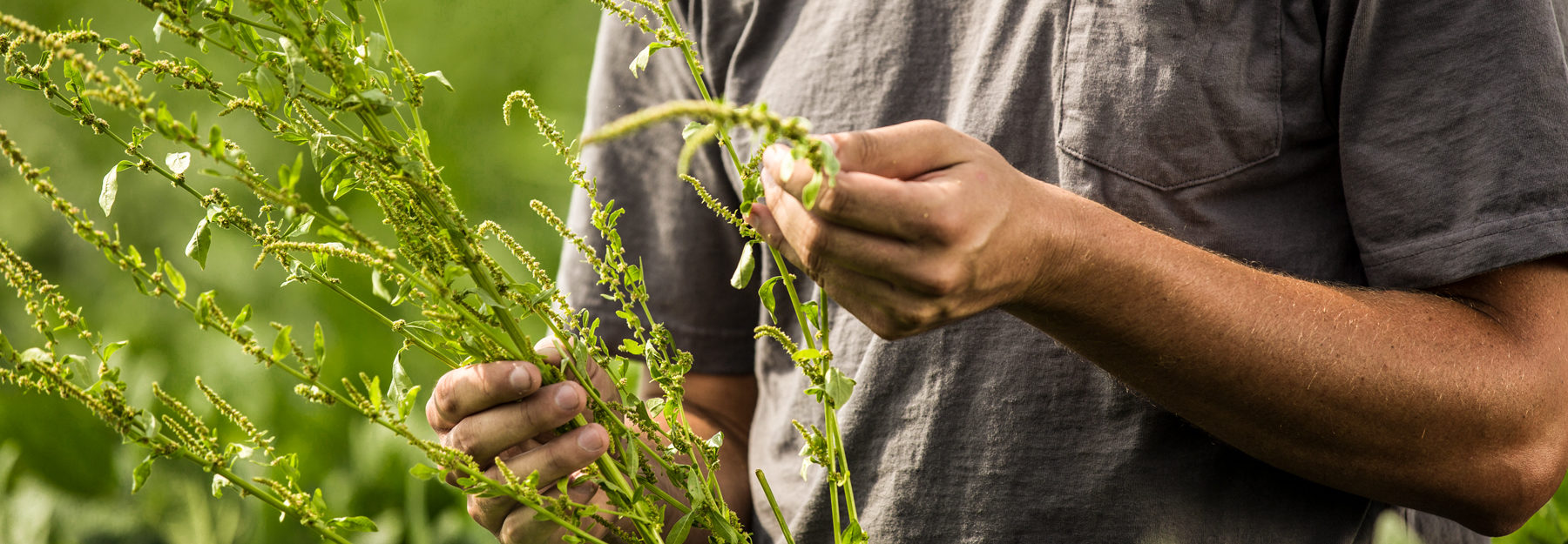
Resistance Management
What is resistance?
Resistance is a change in the sensitivity of a weed, insect, fungi, pathogen or other pest population to a pesticide, resulting in the failure of a correct application of the pesticide to control the pest. Pests that cause disease can develop resistance, resulting in decreased effectiveness of pesticide products.
Why is it important?
Herbicide resistance is one of the biggest issues facing U.S. farmers. For example, according to the Weed Science Society of America, half of both corn and soybean crops in Canada and the U.S. would be lost to uncontrolled weeds without herbicides and other control techniques. (source) Insects present a similar threat, as do fungal diseases. Fortunately, a large array of options exists in the insecticide, herbicide and fungicide markets. However, every year many of those options become slightly less effective as a result of resistance.
What is happening now?
Fungicide Resistance
Currently the least prevalent type of resistance, fungicide resistance has accelerated in recent years.
A 2016 soy checkoff study revealed that more than 300 million bushels of soybeans were lost annually to fungal disease. Prevention methods include planting disease resistant varieties and rotating soybeans with non-legume crops to keep diseases from developing over time.
If disease still emerges, two types of chemical control are available — seed treatments and foliar fungicide applications. When choosing the latter option, farmers should keep in mind the need to apply either as a preventative application or as a curative application, ensuring the most economical outcome. The checkoff also recommends farmers adhere to best management practices, especially using multiple modes of action to minimize the chance of resistance occurring.
Herbicide Resistance
Herbicide resistance has emerged as a serious long-term concern for soybeans. Every growing season, weeds develop resistance to more and more commonly used chemistries, leaving fewer options for farmers to manage weeds.
Many farmers now realize that managing existing herbicide-resistant weeds and preventing the development of new ones requires complex weed-management strategies. Farmers must adopt weed-management practices that lessen the impact of herbicide-resistant weeds and protect current and future herbicide technologies. A diversified weed-management plan that includes using multiple herbicide sites of action and non-chemical controls — like cover crops, tillage and hand weeding — keeps weeds under control and stewards herbicide technology.
Safeguarding existing technology is crucial to weed management. Few successful herbicides with new modes of action (MOA) have been marketed in the past 20 years. (source) A consultancy study conducted by Phillips McDougall demonstrated discovery and developmental costs associated with a new agrochemical product between 2010-2014 was $286 million. (source) Maintaining the effectiveness of current products is critical to farmers’ success.
Insect Resistance
Insect resistance is a serious threat. Without careful stewardship of existing technologies, farmers could lose tools that allow them to control threatening insect pests.
Chemical control is a valuable strategy for managing harmful insect pests, but it is not the only method. To reduce the risk of insects developing resistance to insecticides, it is important for farmers to implement integrated pest management (IPM) strategies. IPM includes practices such as scouting and monitoring pests, adjusting row spacing and crop rotation methods to control insects before resorting to chemical control — and choosing insecticides with the least risk when chemical control is necessary. Implementing these practices helps preserve insecticide chemistries and retain them for future use.
Knowledge of pests, their life cycles and preferred habitats is another critical element of IPM. This helps farmers make decisions around scouting, planting and insecticide application. As with most crop protection challenges, there is no single solution that works best. Instead, a variety of approaches and tools offer farmers the highest chance of successfully preventing and defeating insects, weeds and disease.
Key messages
- The checkoff played a key role in the establishment of Take Action, an industry-wide partnership with research universities that aims to tackle pest resistance on a broad scale. The Take Action partnership includes more than 25 universities from seven major row-crop states, seven major pesticide providers, six farmer-led commodity organizations and two industry organizations.
- On average, it takes 11 years to bring a crop protection product to market. (source)
- Weeds have developed resistance to 23 of the 26 known herbicide modes of action. (source)
- Herbicide-resistant weeds have been reported in 72 different countries for 97 crops.
- Worldwide, more than 500 species of insects and arthropods are resistant to insecticides. (source)